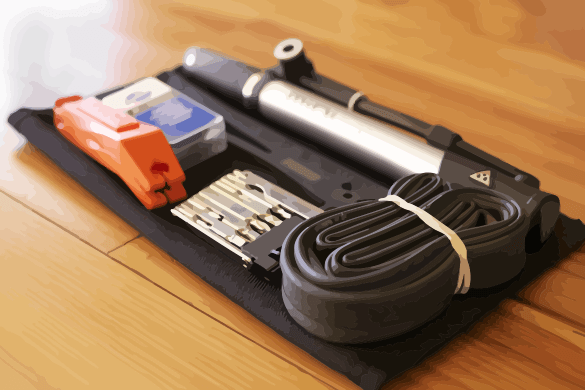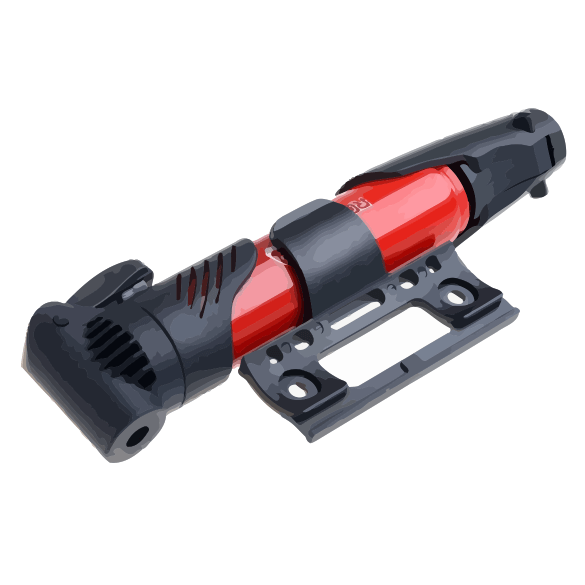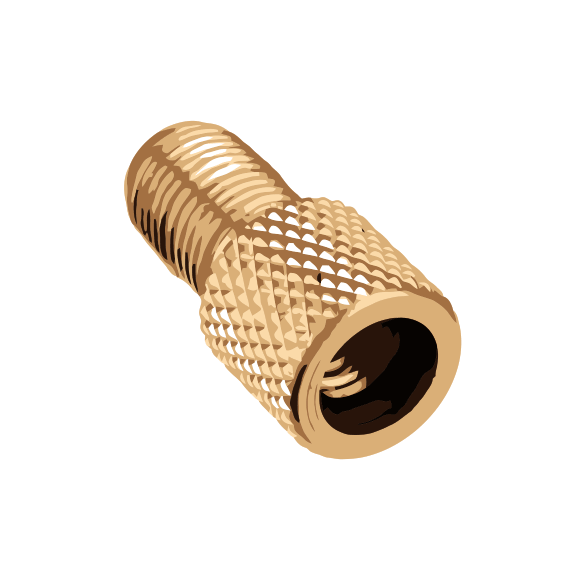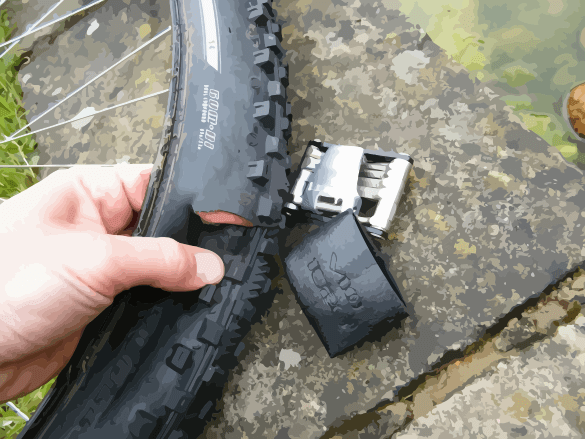Biking Essentials: What To Carry for Repairs and Safety

Emergency Repair Essentials
If you ride, even occasionally, at some point you will have an emergency repair situation while you are out on the road. And, unless you are ready to tackle these situations on the spot you might have to walk or hitch a ride back home. Fortunately, it doesn't take much preparation to handle road repairs. Below are some ideas, listed from the most important to the least, but what you choose to prepare for will depend on how far you are riding, the type of terrain, and perhaps who else you are with. For example, if you're doing a multi-day ride you will need to prepare more comprehensively; if you're with others you may share tools and lessen the overall weight; and if you're riding through trails you may be more prone to flats. Plan accordingly!
Air Pump
 You should always be prepared to fix or replace a flat tire. You'll have a flat sooner or later even on the simplest of terrains. Some people choose to carry compressed air canisters, which in theory is fine, but what happens when they're depleted? I once had to stop to help someone who had packed two canisters, used both of them, and still had a flat tire. And it might sound silly, buy make sure you know how to use the air pump before you go out. In particular, some need adjustment to fit certain tires. The good news is that air pumps can be attached to your bicycle's water bottle screws making it easy to carry.
You should always be prepared to fix or replace a flat tire. You'll have a flat sooner or later even on the simplest of terrains. Some people choose to carry compressed air canisters, which in theory is fine, but what happens when they're depleted? I once had to stop to help someone who had packed two canisters, used both of them, and still had a flat tire. And it might sound silly, buy make sure you know how to use the air pump before you go out. In particular, some need adjustment to fit certain tires. The good news is that air pumps can be attached to your bicycle's water bottle screws making it easy to carry.
Tubes
You may be able to patch your flat, but if the hole is too big the patch won't hold. Also, with high pressure road tires, there's a good chance the patch for even a small hole won't be air tight. So it's a good idea to have spare tubes with you. I've had enough bad luck that, believe it or not, I always carry three spare tubes.
Patches
Even though I carry tubes with me I still carry a couple of self-adhesive patches as a back up. I probably wouldn't do this if the kits weren't so compact and light.
Presta Valve Adapter
 This is a little adaptor you screw onto the presta valve (after you loosen it) which allows you to inflate your tire with a schrader pump. This comes in handy when you have to inflate a tire at a gas station pump.
This is a little adaptor you screw onto the presta valve (after you loosen it) which allows you to inflate your tire with a schrader pump. This comes in handy when you have to inflate a tire at a gas station pump.
Tire Levers
Even if you think you can change your tire without levers, I still recommend carrying a couple of these. If you have to replace an old tire with a new one on the road, and yes it does happen, the new tire may be too tight to put on without tire levers.
Tire Boot
 Many people don't know about this, but think of it like a patch for the tire, not the tube. If you get a rip in the tire, even a small one, the inner tube will protrude through and burst. The only remedy is to patch your tire. You can make your own or buy one. If you make your own, it must be material tough enough to handle the terrain you're riding on. And you'll need some adhesive to hold it in place although it needn't form an airtight seal. Make sure the patch is at least 2″ x 1.25″ (5cm x 3cm).
Many people don't know about this, but think of it like a patch for the tire, not the tube. If you get a rip in the tire, even a small one, the inner tube will protrude through and burst. The only remedy is to patch your tire. You can make your own or buy one. If you make your own, it must be material tough enough to handle the terrain you're riding on. And you'll need some adhesive to hold it in place although it needn't form an airtight seal. Make sure the patch is at least 2″ x 1.25″ (5cm x 3cm).
Chain Link Tool
Chain links don't usually break, but if one does, you need this tool to remove the damaged one and then to reattach the links. If you can't do this, you won't be able to continue riding. These tools come in small emergency sizes. They are also sometimes included in multi-tools.
Multi-Tool
A very light, foldable tool with basic hex keys and sometimes a chain link tool. You don't need to go expensive with this but make sure it has the measurements of hex keys that suit your bike. Most should, but it's better to double check.
Spoke Tool
Even a minor accident can cause your wheel to warp, regardless of whether a spoke breaks. Having a spoke tool can allow you to realign the wheel just enough to enable you to ride home.
Foldable Scissors
Scissors can come in handy in a number of ways including cutting an old tube to make an emergency patch. They don't take much space at all, but make sure the sharp edges are covered so they won't do any damage to spare tubes in your carry bag.
Foldable Tire
If you are doing a multi-day ride, or long distances, it may be needed. Tires can rip if you ride over something sharp, and you will either need to replace it or apply a tire boot. But a tire boot is only temporary and you'll need to change the tire soon anyway. Or if the rip is too large beyond repair then your only recourse is a replacement tire.
Money
I always carry some money with me. Not for food, but in case I need to pay for a ride e.g. a taxi to get back home.
Safety Essentials
Helmet
This one is obvious, but there are still many people that don't wear one. The types of excuses are endless, from messy hair to just a short ride. Keep in mind that an accident is an accident because no one knows when it will happen. A brain injury can kill or leave you incapacitated for many years. Seems worth messing your hair, doesn't it?
Sun Glasses (or Tint-Free Glasses)
Even if it is not sunny your eyes need protection from debris and from the air as it rushes past you (which can dry out the eyes). Get a good pair, take care of them, and they will last a long time. Or find an inexpensive pair that you can buy over and over again as needed.
Lights
Besides being the law, this is also a no brainer. And yet I still see cyclists riding at night without any lights. Another dangerous thing I see are riders with only a front light. Having both a front and back light is good, but if you have just one then pick a rear light to ensure you're seen by drivers. Spend a bit of extra money and get good quality, bright lights. This has become easier to accomplish now that LED lights are so common.
Reflectors
These should NOT be used in place lights, but in addition to them. Options include reflective vests, ankle straps, or the ones you attach onto your bike. As an extra precaution you may consider reflectors on the spokes so you are visible from a side angle.
Bell
A bell is typically required by law, but even so it's a good idea to have one. Mount it somewhere where it's easy to ding without having to move your hands off the handle bars. Even a small one can make enough sound to alert people well ahead of you.
Whistle
This may not qualify legally as replacing a bell, but for commuters it may be a preference. It is much easier and quicker to blow a whistle than to ding a bell. Plus, it's louder. The major drawback though is that it must be in your mouth all the time. You'll see whistles often used by couriers.




Leave a Reply